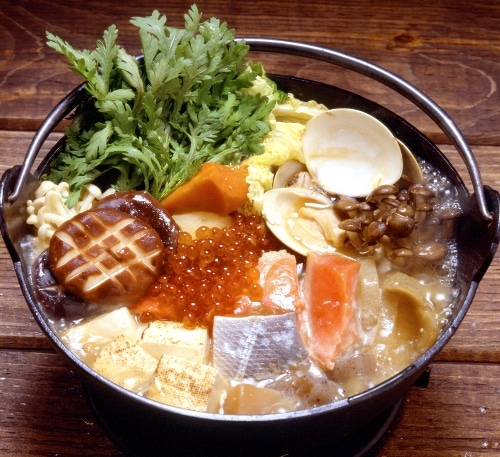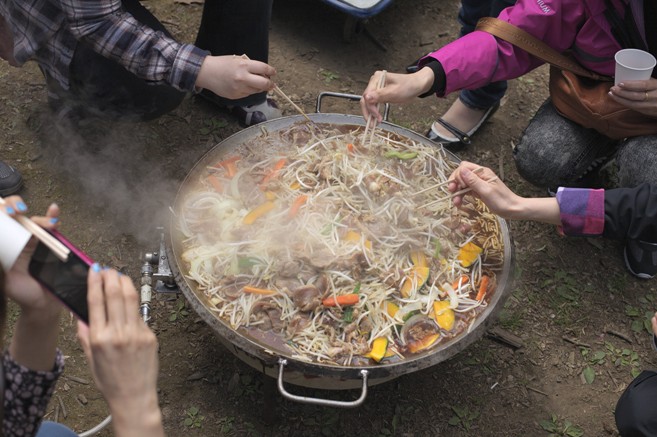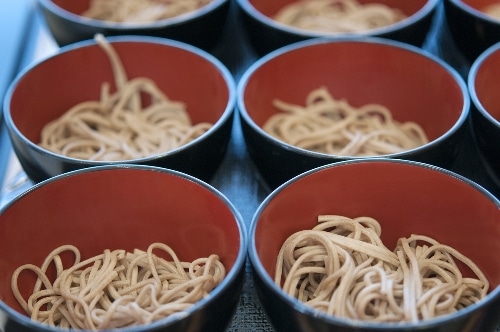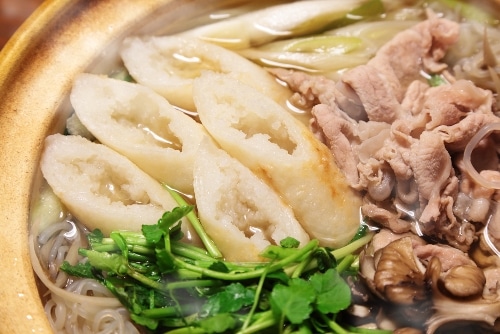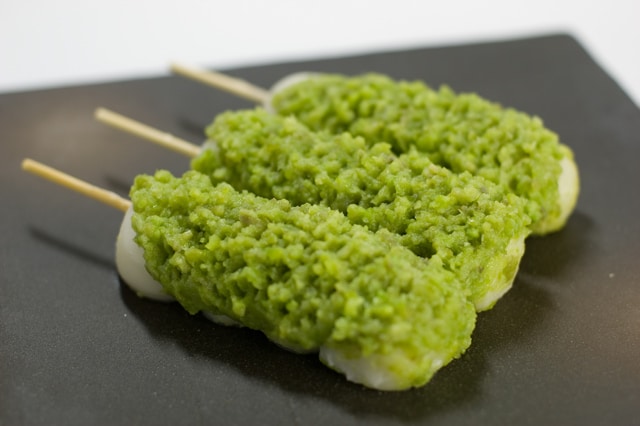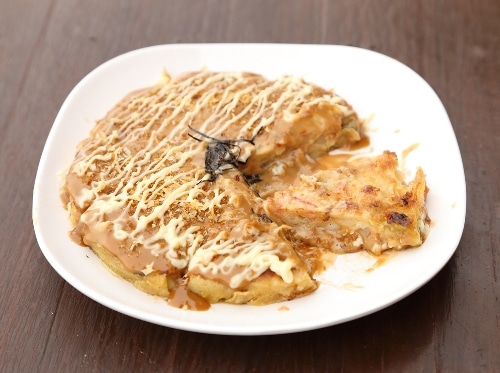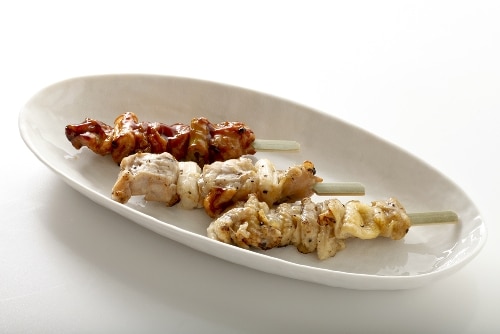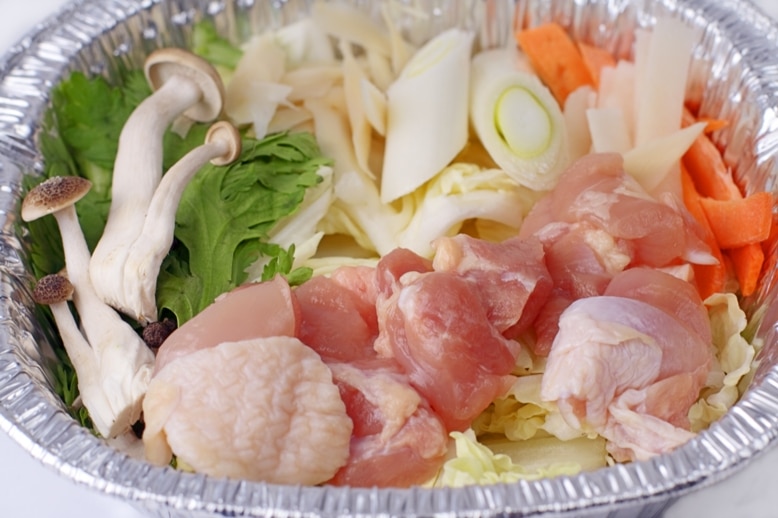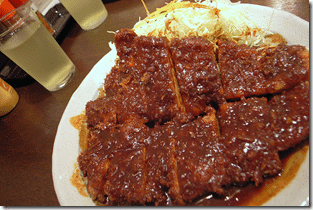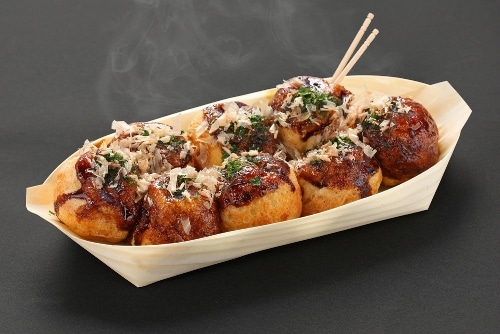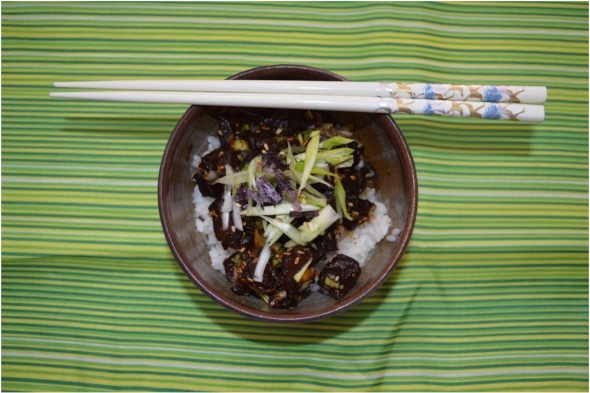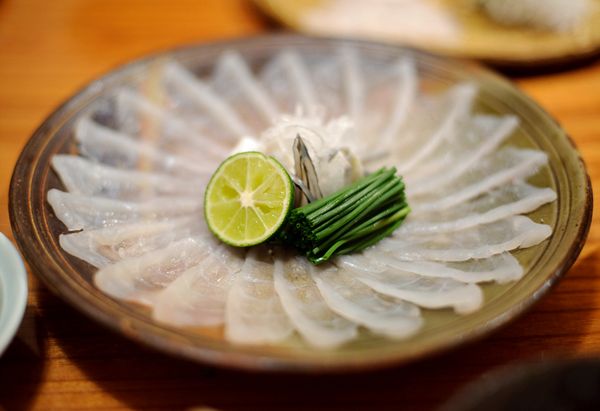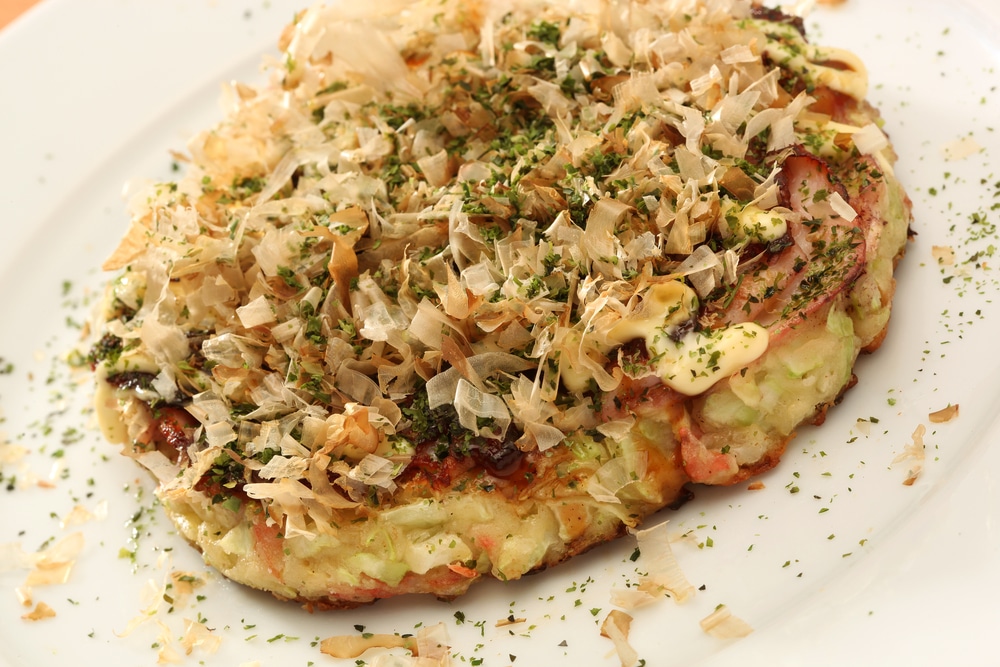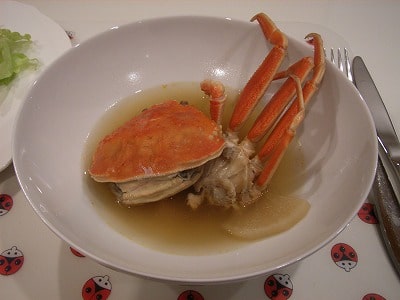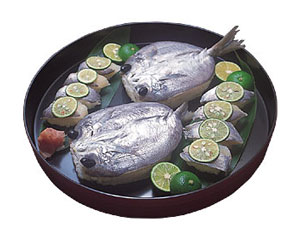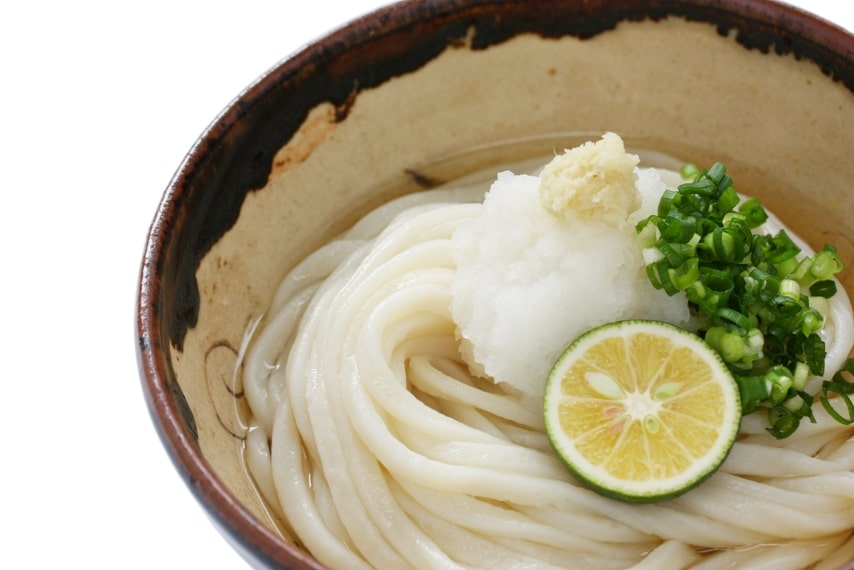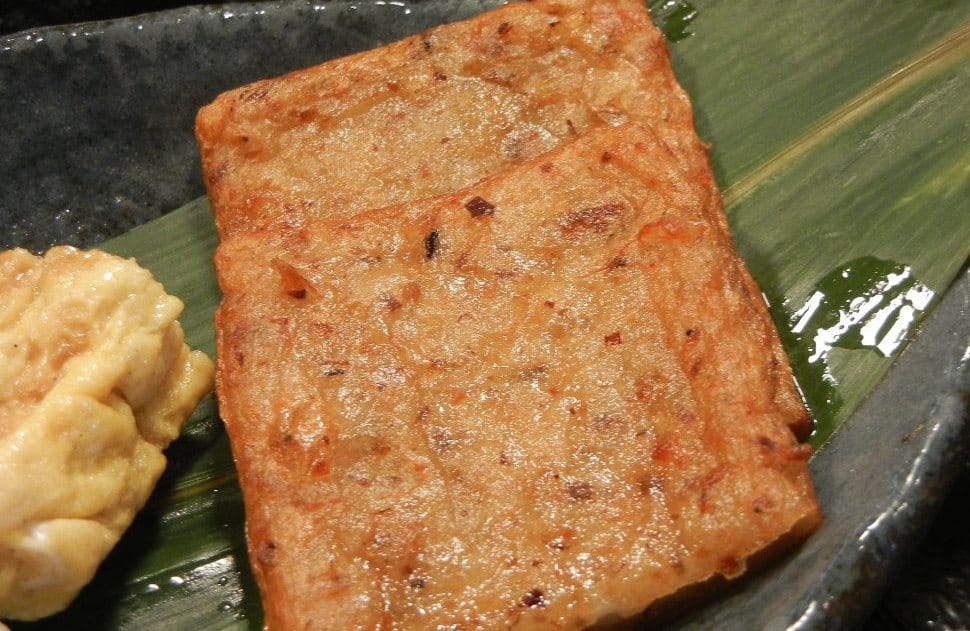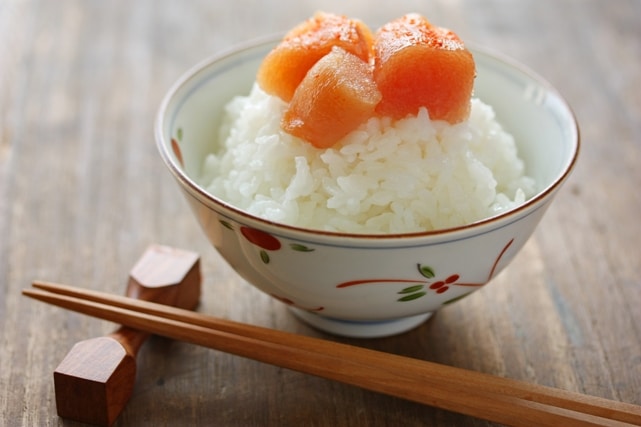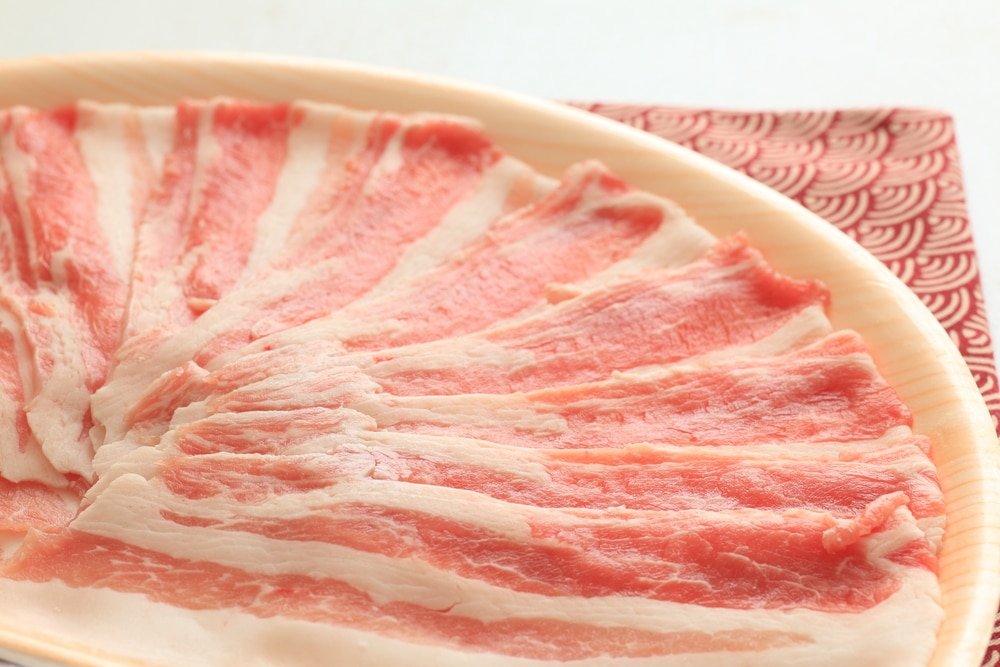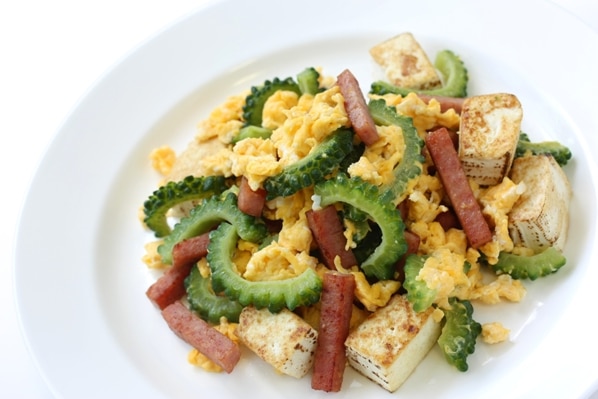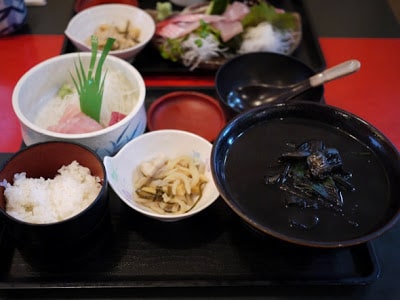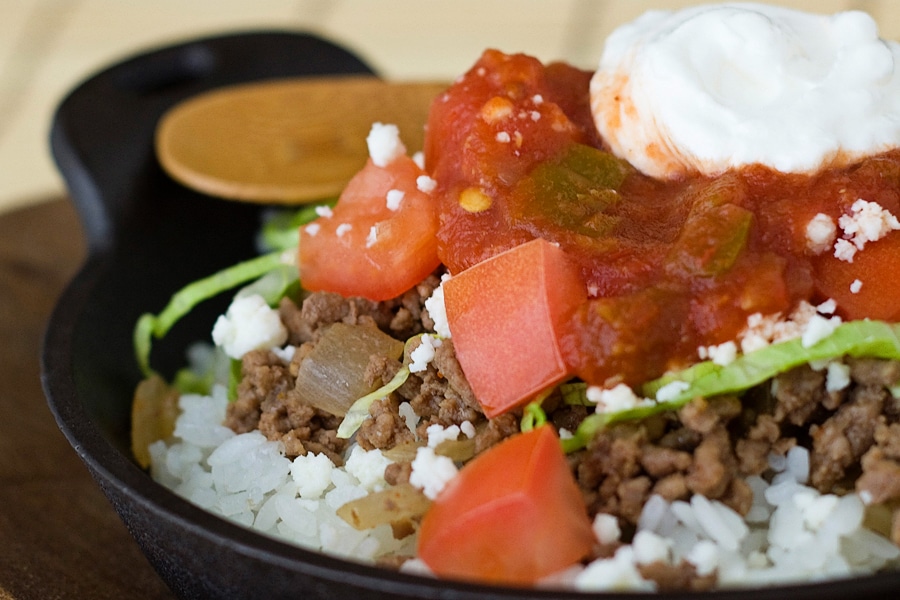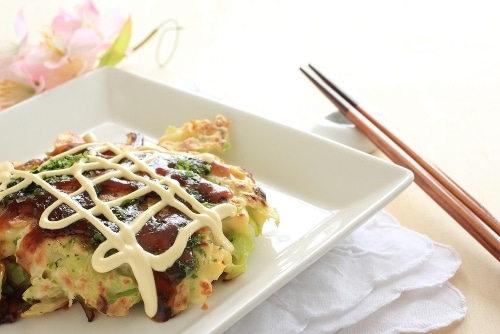
Japanese Regional Cuisine: The Complete Guide to the Most Delectable Dishes From All Over the Country
Japanese regional cuisine or 郷土料理 (きょうどりょうり) consists of the various dishes throughout Japan that come from places ranging from the snowy mountains of Hokkaido to the hardy terrains of Kyushu.
That’s right: Japanese food isn’t just sushi. And anyone who’s been to Japan would probably agree on one thing: the diversity of food in the country is to die for.
Now that you know chopstick etiquette and how to order food without looking like a fool, it’s time to discover all the tasty treats you can partake in across the nation!
Contents
- Hokkaido ( 北海道 / ほっかいどう)
- Tohoku ( 東北 / とうほく)
- Kanto ( 関東 / かんとう)
- Chubu ( 中部 / ちゅうぶ)
- Kansai ( 関西 , かんさい)
- Chugoku ( 中国 / ちゅうごく)
- Shikoku ( 四国 / しこく)
- Kyushu ( 九州 / きゅうしゅう)
- Okinawa ( 沖縄 / おきなわ)
- And One More Thing...
Download: This blog post is available as a convenient and portable PDF that you can take anywhere. Click here to get a copy. (Download)
Hokkaido ( 北海道 / ほっかいどう)
Hokkaido is a northern prefecture that covers Japan’s second largest island. It’s known for its beautiful winters, national parks and—most importantly for us—fresh seafood!
Throughout the island, there are diverse local specialties ranging from Genghis Khan barbecue to Ainu dishes like ruibe ( るいべ ), which is similar to salmon sashimi.
Ishikari Hot Pot — Ishikari Nabe ( 石狩鍋 / いしかりなべ)
Named after the Ishikari River ( 石狩川 / いしかりがわ), Ishikari Nabe is a miso-based hotpot filled with a generous amount of salmon, stewed vegetables and tofu. The dish was originally popular among fishermen but has since become a cold winter specialty in restaurants and households.
Genghis Khan Barbecue — Jingisukan ( ジンギスカン /じんぎすかん)
Jingisukan, also known as “Genghis Khan barbecue,” is another specialty in Hokkaido. After being marinated in a special sauce, thin slices of lamb or mutton are broiled with vegetables on top of a helmet-shaped grill. Jingisukan makes for a great social meal, as diners can cook the dish themselves. Make sure you’re not attending a formal event afterward, though: the strong smell of mutton can stick to your clothes!
(Side note: it’s not really known why this dish is called “Genghis Khan,” when the 12th century Mongolian conqueror never made it to Japan’s shores. Presumably, it’s because mutton is a popular meat in Mongolia, though again, why it’s named after Genghis Khan specifically will never be known.)
Squid Noodles — Ika Soumen ( いか素麺 / いかそうめん)
Ika soumen, or “squid noodles,” are made from—you guessed it—squid! Raw squid is cut into thin strips that resemble soumen, a type of noodle. Grated ginger and soy sauce often accompany the dish.
Although it’s a specialty in Hakodate ( 函館 / はこだて), ika soumen has become popular nationwide.
Tohoku ( 東北 / とうほく)
Tohoku sits on the northern edge of Japan’s largest island, Honshuu ( 本州 / ほんしゅう). The region is known for its scenic landscape that consists of mountains, lakes and hot springs. What’s more: lots of high quality rice, apples and pears are produced in Tohoku’s prefectures.
Soba Noodles in Small Bowls — Wanko Soba ( わんこ蕎麦 / わんこそば)
Be ready to put another knot in your belt! Wanko soba is both a specialty dish and a major attraction in Tohoku’s Iwate ( 岩手 / いわて) prefecture. Soba noodles are served in a small wanko ( わんこ ) bowl with side dishes such as mushrooms and radishes.
What makes wanko soba special is that it’s served as an all-you-can-eat dish. After slurping down your noodles, another bowl of soba is placed in front of you to consume. It’s great fun to see how many bowls you can eat in one sitting! One of the first questions your friends may ask after you return from Iwate is, “How many bowls did you eat?”
Kirotanpo Rice Cakes — Kiritanpo ( きりたんぽ )
Originating in Akita ( 秋田 / あきた), kiritanpo is made from cooked rice pounded into a paste. The paste is then molded into a hollow cylinder shape and skewered.
The dumpling can be served in a variety of ways. Vegetarians may enjoy the dish served with sweet miso ( 味噌 / みそ). Kiritanpo is also used in hot pots called kiritanpo nabe ( きりたんぽ鍋 / きりたんぽ なべ), where a local breed of fowl called hinai ( 比内地鶏 / ひないぢどり), mushrooms, scallions, herbs and soy sauce are main ingredients.
Rice Cakes With Sweet Mashed Soybeans — Zunda Mochi ( ずんだ餅 / ずんだもち)
Another popular treat made from pounded rice is mochi ( 餅 / もち), a popular chewy dessert.
But rather than rice, zunda mochi is made from young soybeans called edamame ( 枝豆 / えだまめ). Boiled edamame pods are mashed into a paste and sweetened with sugar.
There are a number of ways zunda mochi can be prepared and enjoyed. For example, the paste can be poured over mochi or be enjoyed by itself.
Kanto ( 関東 / かんとう)
Sitting on the east side of Japan, the Kanto region hosts many populous prefectures such as Tokyo ( 東京 / とうきょう) and Kanagawa ( 神奈川 / かながわ). With two of Japan’s largest cities, views of Mount Fuji ( 富士山 / ふじさん) and highly-rated food from international guides, the Kanto region is one of the hottest tourist destinations in the country.
Pan-fried Batter — Monjayaki( もんじゃ焼き / もんじゃやき)
Monjayaki is so popular in Tokyo that there’s a dedicated street to it called Tsukishima Monja Street or Tsukishima Monja Sutoriito (月島もんじゃストリート / つきしまもんじゃすとりーと). There, special monjayaki restaurants are all lined up and waiting to dish it out. Although it’s often compared to okonimiyaki ( お好み焼き / おこのみやき), monjayaki has more of a liquid base.
The monjayaki batter is usually made of water, flour and Worcestershire sauce. Other ingredients such as cabbage, meat, seafood and anything else you’d like are mixed into the batter as it cooks on top of a tabletop grill. After becoming crispy on the bottom, friends and family eat monjayaki directly off the grill with small spatulas. (Be careful: those metal spatulas can get hot!)
Grilled Skewered Chicken — Yakitori ( 焼き鳥 / やきとり)
Yakitori is a crowd-pleaser. It’s basically grilled skewered chicken dipped in barbecue sauce. You can find yakitori in a number of places from restaurants and food courts to outdoor stands.
Yakitori shops or yakitoriya ( 焼き鳥屋 / やきとりや ) can be easily identified by red lanterns hung on the outside. In the evening, the shop fills up with crowds of salary workers, college students and couples who’d like a quick bite and a drink.
Grilled Skewered Sweet Buns — Yakimanju ( 焼き饅頭 / やきまんじゅう)
Not to be confused with monjayaki, yakimanju is a traditional dish in Gunma ( 群馬 / ぐんま) Prefecture. Its dough is made with a wheat flour that’s been fermented in sake. Afterward, the dumpling-like pastry is skewered and coated with a special miso sauce then grilled.
Chanko Hot Pot — Chanko Nabe ( ちゃんこ鍋 / ちゃんこなべ)
Nicknamed “sumo stew,” chanko nabe is a Japanese stew that’s popular among sumo wrestlers or rikishi ( 力士 / りきし) as a weight-gain method thanks to its protein-rich ingredients.
There are no hard-and-fast rules as to what goes into the stew, but common ingredients are chicken, fish, tofu and vegetables, and the broth can be made from fish or chicken.
Chubu ( 中部 / ちゅうぶ)
The Chubu region stretches from coast to coast, sitting between the Kanto and Kansai regions, and is home to many leading ski resorts. When you’re not skiing or hiking in the Japanese Alps ( 日本アルプス / にほんあるぷす), travelers can dine on firefly squid sushi or some of Japan’s best sake.
Pork Cutlet with Miso Sauce — Miso Katsu ( 味噌カツ / みそかつ)
You may have already heard of the deep-fried pork cutlet dish known as tonkatsu ( とんかつ ), which is served in a sweet and sour sauce and topped with shredded cabbage.
Miso katsu is similar in that it uses deep-fried pork cutlet as its main ingredient. But, true to its name, it has a unique sauce made from a miso base. This sauce uses a special Aichi ( 愛知 / あいち) miso known as hacchou-miso ( 八丁味噌 / はっちょうみそ) and is sweetened with bonito stock and sugar.
This dish is famous in Nagoya ( 名古屋 / なごや) and comes in many shapes and forms—including buckwheat noodles known as udon ( うどん ).
Grilled Filleted Eel — Unagi no Kabayaki ( 鰻の蒲焼 / うなぎのかばやき)
Unagi ( 鰻 / うなぎ) means eel, and unagi no kabayaki is grilled freshwater eel seasoned with a soy-based sauce. Unlike most eel dishes in Japan, unagi no kabayaki is grilled right after it’s been cleaned and boned, giving it a firmer texture.
It’s said that, because of its protein and vitamin content, unagi is a good source of stamina. For that reason, eel is a popular summer dish eaten on the widely-celebrated Day of the Ox, doyou no ushi no hi (土用の丑の日 / どようのうしのひ).
Pickled Blowfish Roe — Fugu no Ko Nukazuke ( 河豚の子糠漬け / ふぐのこぬかづけ)
Fugu no ko nukazuke, or “pickled blowfish roe,” is a delicacy from Ishikawa ( 石川 / いしかわ) Prefecture. This dish is hard to find elsewhere, and since few are trained to prepare the poisonous fish so that it’s edible, it can be challenging to find fugu no ko nukazuke even within Ishikawa.
The blowfish roe are pickled in a special mix where the roe are first salted, then kept in rice bran or nuka ( 糠 / ぬか) for two to three years. During the fermentation process, the poison vanishes so you can feel free to enjoy as much fugu no ko nakuzuke as your belt can handle.
Kansai ( 関西 , かんさい)
The Kansai region is home to some of Japan’s most popular cities for tourists including Kyoto ( 京都 / きょうと), Osaka ( 大阪 / おおさか) and Nara ( 奈良 / なら). Rural towns, famous castles and old temples can be found within its borders.
The Kansai region is also known as sake country or sake no kuni ( 酒の国 / さけのくに) and is a great place to tour visitor-friendly sake breweries.
Kansai-style Pancakes — Okonomiyaki ( お好み焼き / おこのみやき)
Okonomiyaki has spread from the Kansai area to all over Japan and has two distinct varieties: Kansai and Hiroshima. The version you’ll find in Osaka (and many other places in the nation) is the Kansai one. Many diners have the option to make their own okonomiyaki on a tabletop grill called the teppan ( 鉄板 / てっぱん).
There are many different ways to make okonomiyaki. Generally, you mix the batter consisting of flour, eggs, cabbage and broth. Then, you place the batter on the grill until it looks somewhat like a pancake. You can top it with the likes of meat, seafood, cheese and bonito flakes, along with okonomiyaki sauce and mayonnaise. The result is rewarding and delicious!
Grilled Octopus Balls — Takoyaki ( たこ焼き / たこやき)
Another tasty Osaka dish is takoyaki, which you can find in parks, along the streets, in restaurants and almost anywhere else with a food stand. And for good reason: it’s delicious!
Takoyaki is made from a batter with diced octopus or tako ( たこ ), pickled ginger, green onion and tempura scraps known as tenkasu ( 天かす / てんかす). It’s cooked in a special pan with circular molds, then skewered or served in a bowl, covered in takoyaki sauce and mayonnaise and sprinkled with green laver or aonori ( 青のり / あおのり) and dried bonito or katsuo bushi ( 鰹節 / かつおぶし).
Grilled Octopus Balls with Egg Batter — Akashiyaki ( 明石焼き / あかしやき)
Akashiyaki is said to be takoyaki’s inspiration. It’s a type of dumpling that’s also cooked in a round shape.
As its name suggests, the dish is famous in Akashi ( 明石 / あかし) and is said to be a bit more eggy than takoyaki. The batter is made from eggs and octopus, and before eating, diners dip each dumpling in a fish broth.
Soy Marinated Fish and Sushi Rice — Tekone Zushi( 手こね寿司 / てこねずし)
Nicknamed “fisherman’s sushi,” tekone-zushi is made from cuts of shipjack or bluefin tuna. The cuts are placed in a soy-flavored marinade, then placed on top of vinegared rice and garnished with dried laver seaweed called nori ( のり ), ginger root or shouga ( 生姜 / しょうが) and shiso leaf ( しそ ).
Tekone-zushi is famous in Ise ( 伊勢 / いせ) in Mie ( 三重 / みえ) Prefecture, which borders the Pacific Ocean. It’s well worth the try if you’re in the area—make sure to buy seconds, as one helping (though filling) just isn’t enough!
Chugoku ( 中国 / ちゅうごく)
Home to historic canals and capitals, as well as famous gardens and shrines, the Chugoku region offers something for everyone. For example, foodies can enjoy a wide variety of quirky yet tasty treats from locally grown peaches to sake produced with poisonous blowfish fins.
Blowfish Dishes — Fugu Ryouri ( 河豚料理 / ふぐりょうり)
Blowfish, known as fuku ( ふく ) or fugu ( ふぐ ) is popular in the Yamaguchi ( 山口 / やまぐち) region. The poisonous fish can be prepared in a number of different ways.
As with sashimi, it’s sliced into pieces that are so thin, you can see through them. In fact, those who prepare the fish are required to have a special training and license before they can serve any fugu dishes. Other ways to enjoy fugu are in hot pots and rice porridge.
Hiroshima-style Pancakes — Hiroshima Okonomiyaki ( 広島お好み焼き / ひろしまおこのみやき)
As mentioned before, there are two main variants of okonomiyaki: Kansai-style (that you’ll find in Osaka and most regions of Japan) and Hiroshima-style. Popular ingredients include cabbage, pork and seafood.
Rather than mixing the ingredients into a batter like the Kansai version does, Hiroshima-style okonomiyaki layers the ingredients on top of the batter before topping the mixture off with a layer of noodles, cheese and okonomiyaki sauce.
Crab Soup — Kani Jiru ( カニ汁 / かにじる)
Fresh and affordable, kani jiru is a dish that seafood lovers shouldn’t pass up. Kani jiru consists of snow crabs that have been cleaned, cut in half and boiled along with daikon ( 大根 / だいこん) radish. The crab is served in a broth made from miso paste and garnished with leeks.
Shikoku ( 四国 / しこく)
Shikoku is the smallest of Japan’s main islands and is divided into four prefectures—hence its name, which literally translates to “four countries”.
Shikoku is one of the more underrated destinations in Japan, which is unfortunate because it houses lots of modern art attractions, beautiful castles and peaceful shrines. By its seaside are widespread plantations of olive or oriibu ( オリーブ / おりーぶ-), red bean or azuki ( 小豆 / あずき) and soy bean or daizu ( 大豆 / だいず).
Whole Butterfish with Sushi Rice — Bouze no Sugata Zushi ( ぼうぜの姿寿司 / ぼうぜのすがたずし)
Sushi lovers will definitely enjoy this Tokushima ( 徳島 / とくしま) dish! A staple in autumn festivals, bouze no sugata zushi is a whole fish (such as Japanese butterfish, mackerel or freshwater trout) that’s cleaned then soaked in vinegar. It’s then stuffed with vinegared sushi rice and is often accompanied by a splash of citrus juice.
Sanuki Udon Noodles — Sanuki Udon ( 讃岐うどん / さぬきうどん)
Sanuki udon uses handmade, firm noodles with a notably smooth texture. There are many different ways to eat sanuki udon.
It’s commonly served in a kelp-based soup with a separate dipping sauce. The soup can be enjoyed with a variety of toppings, and many shops in the Kagawa ( 香川 / かがわ) prefecture specialize in the noodle alone.
Glowbelly fish cakes — Jakoten ( じゃこ天 / じゃこてん)
Jakoten comes from Ehime ( 愛媛 / えひめ) Prefecture. The dish is made from a small local fish, usually glowbelly fish called hotarujako ( 蛍じゃこ / ほたるじゃこ), that’s pounded and made into a paste, bones and gills included. The paste is then deep-fried and served.
Jakoten can be found in round, oval shapes or thin square pieces. It’s often served in noodle dishes or alone as a snack.
Kyushu ( 九州 / きゅうしゅう)
Kyushu is Japan’s third largest island. It’s known for its pleasant climate, delicious alcohol called shouchu ( 焼酎 / しょうちゅう) and beautiful cities and scenery. Many historical sights with both foreign and traditional Japanese influences can be found throughout Kyushu.
Spicy Cod/Pollock Roe — Karashi Mentaiko( 辛子明太子 / からしめんたいこ)
Mentaiko ( 明太子 / めんたいこ) is marinated cod and pollock roe, and karashi mentaiko is a spicy version of it that’s famous in Fukuoka ( 福岡 / ふくおか) City.
The roe is marinated in a chili pepper sauce known as tougarashi ( 唐辛子 / とうがらし) and served in a number of dishes that include rice balls, spaghetti and even pizza.
Champon Ramen Noodles — Champon ( ちゃんぽん )
Champon uses pork, seasonal seafood and vegetable ingredients —all pan-fried in lard. After the ingredients become tender, the mixture is added to a special broth made from chicken and pig bones. Special ramen noodles are cooked in a unique style, where they’re cooked together in the same pan as the mixture.
Berkshire Pork Hot Pot — Kurobuta Shabu-Shabu ( 黒豚しゃぶしゃぶ / くろぶたしゃぶしゃぶ)
Kurobuta ( 黒豚 / くろぶた) is Kagoshima’s specialty Berkshire pork that’s said to have a sweet and delicate taste. Kurobuta shabu-shabu is unique because it uses Berkshire pork rather than beef (which is more common in shabu-shabu dishes). The dish is usually served with tofu and vegetables.
Okinawa ( 沖縄 / おきなわ)
With its crystal clear waters, beautiful beaches and rich history, Okinawa is the perfect getaway for just about anyone. It’s made up of dozens of small islands and serves up a variety of amazing local dishes.
You can try anything from snorkeling with sea turtles to munching on the local dish called mimigaa ( みみがあ ), which is crunchy pig ears in vinegar.
Stir Fry with Bitter Melon — Gooya Chanpuruu( ゴーヤチャンプルー / ごーやちゃんぷるー)
Gooya Chanpuruu may just be Okinawa’s most famous dish. It’s a stir-fry that usually combines tofu, egg, pork and gooya ( ゴーヤ / ごーや) or bitter melon ( 苦瓜 / にがうり), a fruit that’s common throughout tropical and subtropical regions.
For those of you who aren’t familiar with bitter melon, it’s about as popular with children as brussel sprouts is (which is to say, it’s not popular at all). The bitterness, however, is tempered somewhat by marinating the gooya in salt before it’s added to the dish.
Squid Ink Soup — Ikasumi Jiru (イカスミ汁 / いかすみじる )
Okinawa is also famous for ikasumi jiru, a thick black soup that gets its color from squid ink. The main ingredients consist of squid, leafy greens called nigana ( 苦菜 /にがな ) and three pieces of chicken or pork.
Just remember to have a toothbrush handy after you’re done with this dish — the ink will dye your mouth black!
Taco Rice — Tako Raisu( タコライス / たこらいす)
Confusingly enough, this isn’t made from tako or octopus. Taco rice is among the many unique specialties in Okinawa, incorporating culinary influences from outside of Japan.
As its English name suggests, taco rice consists of common taco ingredients such as ground beef, lettuce, tomatoes and cheese, all topped over a steaming dish of Japanese rice. The dish is well-liked by tourists and locals—it’s so popular that even KFC has added it to their menu in Okinawa.
Prefectures, cities and even sub-districts have many different kinds of local cuisine waiting to be discovered. To make the most out of your next trip, make sure to do your 郷土料理 research so you don’t miss out on opportunities to try out your knowledge of Japanese food adjectives!
If you’re stuck at home and longing to experience all of this, you can treat yourself to a subscription to Kawaii Box, which provides a delicious dose of Japanese cuteness. You’ll usually get a snack or two in every box—and possibly some adorable items from Japan as well.
You can also dive into Japanese regional cuisine by watching videos on the language learning platform FluentU.
FluentU takes authentic videos—like music videos, movie trailers, news and inspiring talks—and turns them into personalized language learning lessons.
You can try FluentU for free for 2 weeks. Check out the website or download the iOS app or Android app.
P.S. Click here to take advantage of our current sale! (Expires at the end of this month.)

Good luck, and happy eating!
Download: This blog post is available as a convenient and portable PDF that you can take anywhere. Click here to get a copy. (Download)
And One More Thing...
If you love learning Japanese with authentic materials, then I should also tell you more about FluentU.
FluentU naturally and gradually eases you into learning Japanese language and culture. You'll learn real Japanese as it's spoken in real life.
FluentU has a broad range of contemporary videos as you'll see below:

FluentU makes these native Japanese videos approachable through interactive transcripts. Tap on any word to look it up instantly.

All definitions have multiple examples, and they're written for Japanese learners like you. Tap to add words you'd like to review to a vocab list.

And FluentU has a learn mode which turns every video into a language learning lesson. You can always swipe left or right to see more examples.

The best part? FluentU keeps track of your vocabulary, and gives you extra practice with difficult words. It'll even remind you when it’s time to review what you’ve learned. You'll have a 100% personalized experience.
Start using the FluentU website on your computer or tablet or, better yet, download the FluentU app from the iTunes or Google Play store. Click here to take advantage of our current sale! (Expires at the end of this month.)
